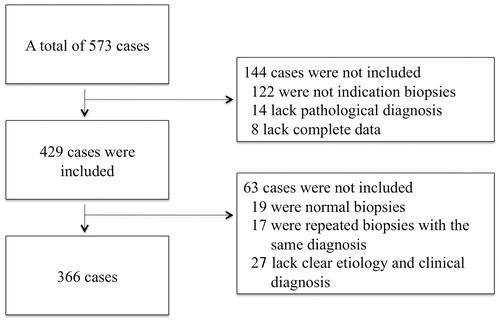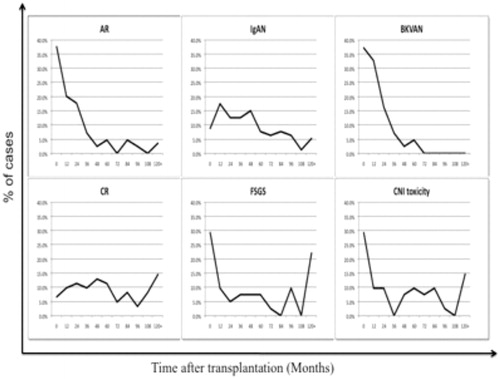Figures & data
Figure 1. To investigate the causes of graft dysfunction, this series included patients with repeated indication biopsies, but excluded protocol biopsies and repeated indication biopsies with the same diagnosis. Additionally, biopsy results without a clear etiology and clinical diagnosis were excluded, such as chronic changes without evidence of any specific etiology (category 5 or 6 in Banff 2007).

Table 1. Recipient and donor characteristics.
Figure 2. The incidence of various causes in different clinical settings. AR was established within the first year after transplantation and then declined sharply in the following years. The peak incidence of BKVAN occurred within 1–2 years postoperatively. FSGS occurred more frequently within the first year and nearly 10 years postoperatively. IgAN, CR, and CNI toxicity damage occurred similarly in each year.

Table 2. The incidence of various causes of graft dysfunction.
Table 3. The clinical features and treatment outcomes of early and late AR.
Table 4. The clinical features of different causes at the time of biopsy.
